
Rent / Buy
Rent / Buy
Trailer
Synopsis
Milestones this season included not one but two encore appearances by the Daleks; the departure of the original three companions, Susan Foreman, Barbara Wright and Ian Chesterton; and the first appearance of someone else from the Doctor and Susan's home planet, and the first Time Lord enemy to appear.
Episode 39 : Checkmate
July. 24,1965

The Doctor finally discovers what the Monk is up to and must move fast to prevent his opponent from altering the course of history.
Episode 38 : A Battle of Wits
July. 17,1965

The Doctor manages to escape from his cell and get the upper hand on the Monk but his plans are derailed when Sven and Ulf arrive at the monastery.
Episode 37 : The Meddling Monk
July. 10,1965

The Doctor is being held prisoner by the Monk and Steven and Vicki's search for him brings them to the Saxon village.But a greater danger threatens when a Viking raiding party arrives.
Episode 36 : The Watcher
July. 03,1965

The Doctor, Vicki, and Steven Taylor, go to 1066 England, but something doesn't seem right including modern inventions like a Gramaphone and electricity. Could there be another Time Lord?
Episode 35 : The Planet of Decision
June. 26,1965

The Doctor and his friends are taken into the Mechanoid City but their troubles are far from over...especially when the Daleks launch an attack.
Episode 34 : The Death of Doctor Who
June. 19,1965

With Vicki trapped on board the Dalek time machine, the Doctor, Ian and Barbara decide to make their stand on the planet Mechanus.
Episode 33 : Journey into Terror
June. 12,1965

The TARDIS lands in a haunted house where the Doctor and his friends are confronted by Dracula and Frankenstein's Monster...and then the Daleks appear.
Episode 32 : Flight Through Eternity
June. 05,1965

The TARDIS crew's attempts to escape from the Daleks take them to the top of the Empire State Building and a 19th century sailing ship.
Episode 31 : The Death of Time
May. 29,1965

While Ian and Vicki are threatened by a Mire Beast, the Doctor and Barbara meet up with the Aridians...who are then ordered to hand them over to the Daleks.
Episode 30 : The Executioners
May. 22,1965

The Daleks pursue The Doctor through time and space, with the intentions of exterminating him. Places they land include the Mary Celeste, a haunted house and the empire state building.
Episode 29 : The Final Phase
May. 15,1965

While Ian tries to force Lobos to release the Doctor from the museum, Vicki joins the Xerons in trying to gain the weapons needed to start a revolution against the occupiers.
Episode 28 : The Search
May. 08,1965

With the Doctor missing, Ian, Barbara and Vicki find themselves in danger from the Moroks while the Xerons also try to make contact with them.
Episode 27 : The Dimensions of Time
May. 01,1965
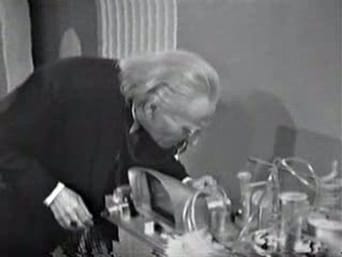
Now back on their proper time track, the Doctor and his friends must work to avoid the future they saw for themselves.
Episode 26 : The Space Museum
April. 24,1965

The TARDIS arrives on a planet that has been turned into a space museum but the Doctor and his friends are puzzled when they find themselves out of phase with their surroundings.
Episode 25 : The Warlords
April. 17,1965
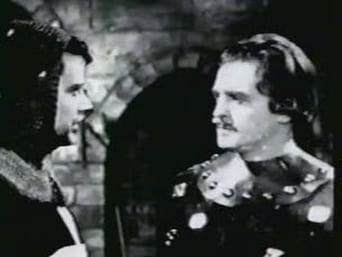
Ian sets out with a reluctant accomplice to rescue Barbara from El Akir's palace as the Doctor and Vicki try to evade the suspicions of the Earl of Leicester.
Episode 24 : The Wheel of Fortune
April. 10,1965
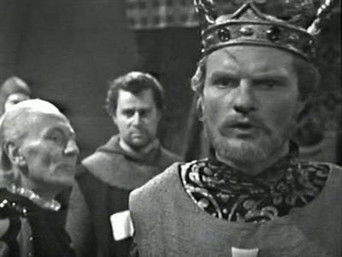
Barbara allies herself with a man whose were murdered by El Akir as the Doctor and Vicki are caught up in Richard's plan to offer his sister's hand in marriage to Saladin's brother.
Episode 23 : The Knight of Jaffa
April. 03,1965
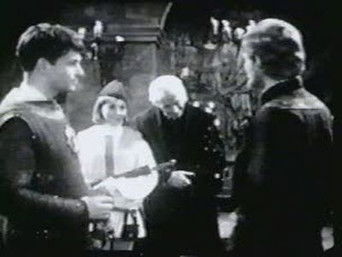
While the Doctor, Ian, and Vicki are drawn into the intrigues of King Richard's court, Barbara has to cope with an impatient Saladin and the vengeful El Akir.
Episode 22 : The Lion
March. 27,1965
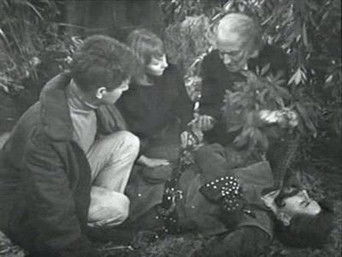
The TARDIS lands in the Holy Land during the Third Crusade and the crew help save Richard the Lionheart from an ambush, but Barbara is captured and brought before Saladin.
Episode 21 : The Centre
March. 20,1965

The Doctor and Vicki are taken before the Animus but the isoptope is left behind in the laboratory.The only hope of victory lies with Barbara and her Menoptera allies.
Episode 20 : Invasion
March. 13,1965

Barbara and the surviving Menoptera take refuge in the Temple of Light while the Doctor and Vicki attempt to escape by taking control of a Zarbi.
Episode 19 : Crater of Needles
March. 06,1965

Ian and Vrestin are captured by the subterranean Optera while Barbara and her Menoptera allies attempt to escape from the slave camp.
Episode 18 : Escape to Danger
February. 27,1965
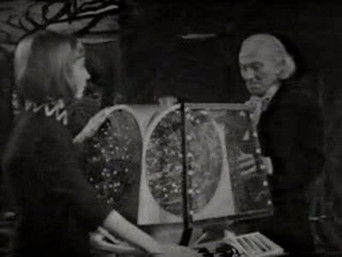
The Doctor is forced to co-operate with the Animus but Ian uses the opportunity to make an escape attempt.
Episode 17 : The Zarbi
February. 20,1965
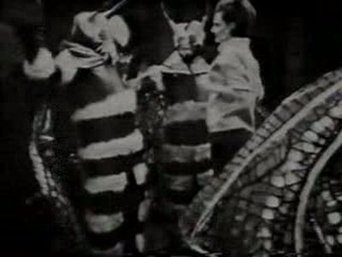
The Doctor, Ian and Vicki are captured by the Zarbi while Barbara meets up with the butterfly-like Menoptera who are trying to reclaim the planet.
Episode 16 : The Web Planet
February. 13,1965
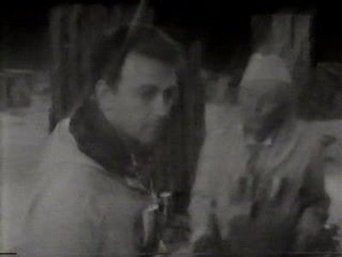
The TARDIS is drawn by a mysterious force and lands on the alien planet Vortis. There the Doctor, Ian, Barbara and Vicki find themselves caught up in a war between an evil force known as "The Animus", its ant-like Zarbi allies, and the butterfly-like Menoptra race and their allies the subterranean Optera.
Episode 15 : Inferno
February. 06,1965

Ian and Delos manage to escape from Sevcheria and Tavius agrees to help Barbara rejoin them.The Doctor's attempts to avoid being thrown to the lions inadvertently result in Nero deciding to burn down Rome.
Episode 14 : Conspiracy
January. 30,1965

Ian and Delos are forced to fight each other for their freedom while the Doctor has to perform for Nero's court.
Episode 13 : All Roads Lead to Rome
January. 23,1965

While the Doctor and Vicki meet with Nero, Barbara is taken to Rome to be sold while Ian is forced to work as a galley slave.
Episode 12 : The Slave Traders
January. 16,1965
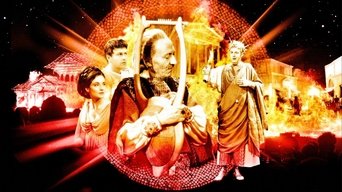
The travellers decide to take a holiday near ancient Rome, but after a month the Doctor gets restless. He and Vicki determine to visit Rome, and while they are gone Ian and Barbara are abducted by slave traders. All roads lead to Rome, however, and the travellers find themselves at the mercy of the country's petulant emperor, Nero... (Originally broadcast in four parts.)
Episode 11 : Desperate Measures
January. 09,1965

The Doctor and Ian reach the crashed spaceship and meet up with Barbara and Vicki, where the Doctor uncovers the truth about Koquillion.
Episode 10 : The Powerful Enemy
January. 02,1965

On the planet Dido, the monstrous Koquillion terrorizes Bennett and Vicki, the only survivors of a crashed spaceship. When the TARDIS lands, the Doctor, Ian, and Barbara team up with Vicki to discover what Koquillion is hiding. (Originally broadcast in two parts.)
Episode 9 : Flashpoint
December. 26,1964
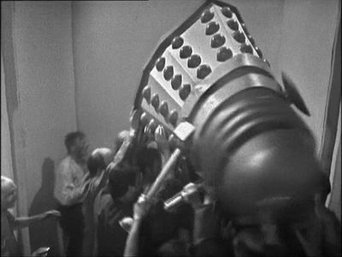
The Daleks' plan to transform Earth into a giant spaceship and wipe out its inhabitants is nearing completion and the Doctor and his friends face a race against time to prevent them from destroying the planet's core.
Episode 8 : The Waking Ally
December. 19,1964

The Doctor's party investigate the Daleks' central control in Bedfordshire while Barbara and Jenny's attempt to reach it are derailed when they are betrayed.
Episode 7 : The End of Tomorrow
December. 12,1964

While Susan and David try to find a way out of London, Ian and Larry infiltrate the Dalek mine workings.
Episode 6 : Day of Reckoning
December. 05,1964

The Doctor manages to escape from the Dalek saucer and meet up with Susan and David but Ian is left trapped onboard. Meanwhile, Barbara and her new friends face a dangerous journey across London.
Episode 5 : The Daleks
November. 28,1964

The Doctor and Ian are taken to the Dalek saucer while Susan and Barbara join the rebels in planning an attack.
Episode 4 : World's End
November. 21,1964

Ian and Barbara believe the TARDIS has finally returned to their contemporary London, but soon discover signs of plague and warfare. Their old enemies, the Daleks, have invaded the Earth of the 22nd century. Separated and fighting for their lives, the travellers must try to aid the remaining humans and overthrow the Daleks' cruel tyranny. (Originally broadcast in six parts.)
Episode 3 : Crisis
November. 14,1964

The Doctor and his friends face a race against time to expose Forrester's plans and return to normal size before Barbara succumbs to the effects of DN6.
Episode 2 : Dangerous Journey
November. 07,1964

Ian and Barbara are accidentally taken into Smithers' laboratory and, while the Doctor and Susan face a hazardous journey to reach them, they witness the deadly effects of DN6 first hand.
Episode 1 : Planet of Giants
October. 31,1964

When the TARDIS malfunctions and the doors open in the time vortex, the travellers and their Ship shrink to the size of insects. When they arrive on Earth, they uncover a murderous plot involving a new insecticide - but how can they stop the crime in their miniaturised condition ? (Originally broadcast in three parts.)
Seasons
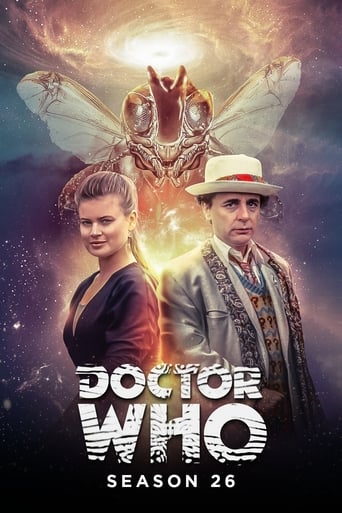
Season 26
It was the final season of the "classic" series. Unusually for a Doctor Who season, aside from some scenes in Survival, all the stories took place on Earth. Apart from Battlefield, the stories followed a loose character arc, as Ace came to terms with her past. As for the Doctor, he had become darker in personality, treating others as pawns in the battle between good and evil while dressing in dark clothes to match his personality change. This was the first and so far only season to be produced entirely out of broadcast order.

Season 25
As the silver anniversary season, it included several stories noting the milestone: Remembrance of the Daleks, which featured the final "classic series" appearance of the Daleks and Davros and which would feature scenes set at Coal Hill School and 76 Totter’s Lane, both significant locations in the first episode, An Unearthly Child; and Silver Nemesis, the final classic series appearance of the Cybermen, which had its first episode broadcast on the actual 25th anniversary of the series. It also showed the lighter side of the Seventh Doctor's personality fade and be replaced by darker qualities. The Greatest Show in the Galaxy was also the last episode to have the Doctor dressed in bright colours. This would also be the first season that would be recorded with the intention of, and be broadcast in, a stereo mix.
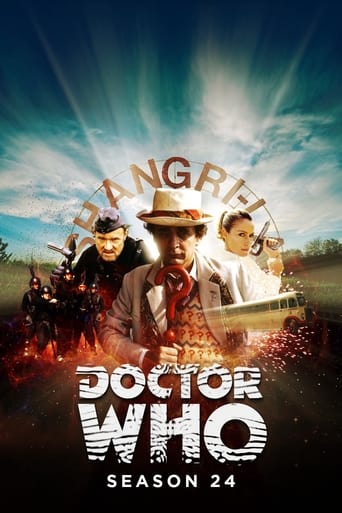
Season 24
Unlike season 23, there was no overall story arc, and the episode allotment - two four-episode stories, two three-episode stories - would be retained for the remainder of the original series. Notably, the season featured the introduction of new companion Ace, who would be a prominent figure in the spinoff fiction that kept the Doctor Who name alive following its cancellation in 1989 and was the final official onscreen companion until Rose Tyler in the revived series.

Season 23
This season had a unique format, never again repeated in the show. Doctor Who had returned to production after a near-cancellation and an eighteen-month production hiatus. For the first time, a season consisted of a single story, The Trial of a Time Lord, although this was made up of four serials from a production perspective: each serial was written by a different person (save for The Mysterious Planet and the first part of The Ultimate Foe, both of which were written by Robert Holmes) and featured a different story presented as evidence, excluding the final two episodes which concluded the ongoing story of the trial; the trial storyline itself acted as a framing device to bracket the first three serials. As a result, whether The Trial of a Time Lord should be considered one story or four has been intensely debated. This single-story format, sometimes referred to as a "miniseries", would later be utilised for the third and fourth series of Torchwood.

Season 22
With this season the BBC experimented with the format of the series, reducing the number of episodes to thirteen, but making each episode forty-five minutes long. The experiment did not result in improved ratings and at the end of the season the BBC announced it was cancelling the series; uproar from fans resulted in the BBC changing its mind and putting the series on an eighteen-month hiatus instead. This season is notable for featuring the final appearance of Patrick Troughton as the beloved Second Doctor, in a storyline that gave rise to a popular fan theory known as Season 6B.
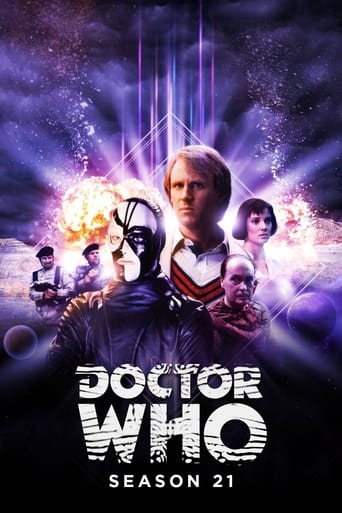
Season 21
The Twin Dilemma, the first story with Colin Baker as the Sixth Doctor, aired last in the season. This season saw the departure of companions Tegan, Turlough and Kamelion and introduced Peri. Most episodes were the traditional twenty-five minute length. However, due to coverage of the 1984 Winter Olympics, Resurrection of the Daleks was re-edited before airing and shown as two forty-five minute episodes.
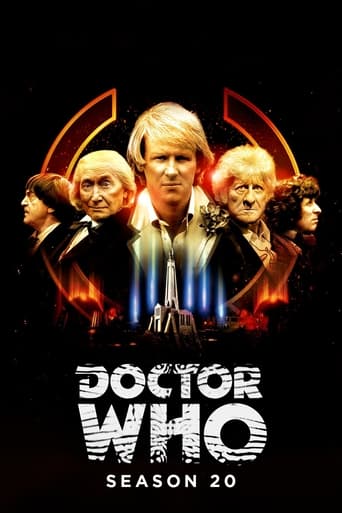
Season 20
Structurally, the season retread season 18's formula of including a trilogy of stories bound together by an overarching theme. In this instance, the tripartite tale involved Turlough's attempts to kill the Doctor at the behest of the Black Guardian.

Season 19
Two milestones occurred in Earthshock. Firstly, the Cybermen returned, unannounced, for the first time since Revenge of the Cybermen in 1975 with a completely different design, with David Banks' first appearance as Cyber-Leader, a role he would return to in subsequent stories involving the Cybermen until Silver Nemesis. Secondly, for the first time since The Daleks' Master Plan which had aired in 1965 and 1966, a companion died. Other milestones included Black Orchid, the first non-science fictional historical serial since 1966's The Highlanders, and the destruction of the Doctor's sonic screwdriver in The Visitation. A cliffhanger ending to the series appeared to have left Tegan stranded at Heathrow Airport with the Doctor abandoning her by mistake (the Doctor had spent most of the series trying to get Tegan back to Heathrow, which almost became a running theme).
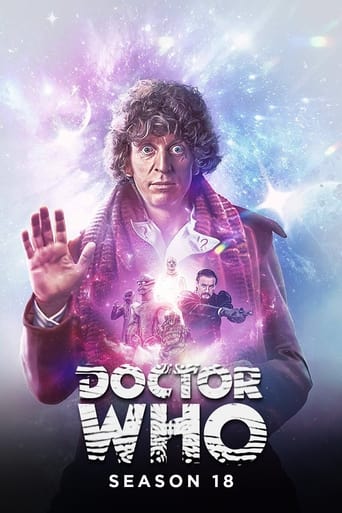
Season 18
The season featured a story arc involving E-Space and the return of the Master who had stolen a new body rather than regenerate. The stories were darker and more adult in tone than those during the Graham Williams era. They also attempted to emphasise science, much to the satisfaction of both script editor Christopher H. Bidmead and executive producer Barry Letts. Notably, this season revolves around the theme of entropy, linking together all of its stories in a rare phenomenon for the show (while other story arcs would be linked together via people, objects, etc, the use of an overarching theme for a season was unprecedented). This theme would eventually foreshadow and culminate in the Doctor's regeneration at the end of the season.
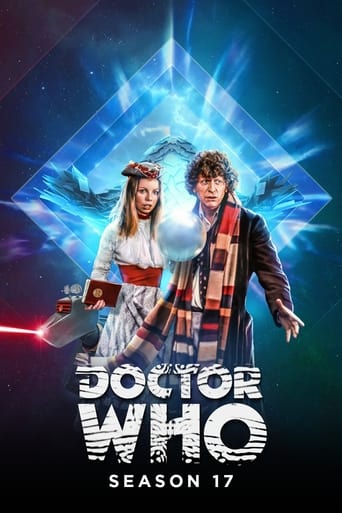
Season 17
It consisted of five stories, plus the incomplete Shada, unfinished as a result of an industrial strike. Lalla Ward joined as Romana II, and the season is notable for the involvement of Douglas Adams in the writing department. This was the last season to use the traditional Delia Derbyshire "Doctor Who theme" arrangement.
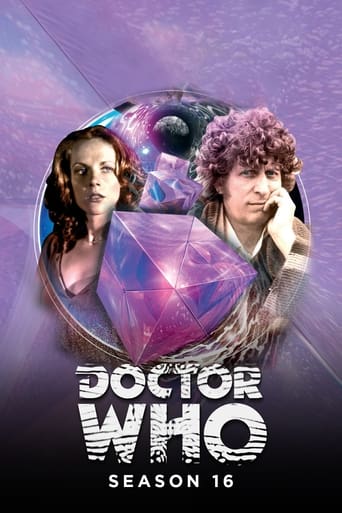
Season 16
This season saw the introduction of the Black and White Guardians as well as the companion Romana, who became only the second female Time Lord companion since Susan. This season is sometimes colloquially known as The Key to Time season after the story arc involving the Key to Time. Although not the first season to consist of linked stories (Season 8 in 1971 was the first, as all the stories that year featured the Master), it was the first to be recognised as having a series long arc. Although multi serial arcs would occur again, such a full- season experiment wouldn't be attempted again until Season 23. The arc has a number of similarities to the Season 1 story The Keys of Marinus. The storyline was originally proposed for Season 15, but it required more planning.

Season 15
This season introduced K9 to the series and saw the departure of Leela. It was originally intended to include Terrance Dicks' story The Vampire Mutations but, due to a major BBC production of Dracula, it was postponed. It later became Season 18's State of Decay. To replace it, Dicks quickly scripted the season opener, Horror of Fang Rock. The season took a two week transmission break over the 1977 Christmas period, between the broadcast of part four of The Sun Makers and part one of Underworld.
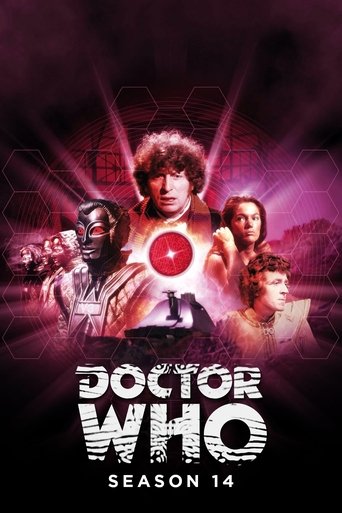
Season 14
The season is notable for the departure of Sarah Jane Smith in The Hand of Fear and for The Deadly Assassin, a story set entirely on Gallifrey which expounded greatly upon the culture and history of the Time Lords, and the Eye of Harmony and Rassilon are mentioned for the first time. The Deadly Assassin also featured the return of the Decayed Master in a degenerated form and had the Doctor without a companion for an entire story for the first time in the history of Doctor Who. This story is also the first time the limit of regenerations is set.
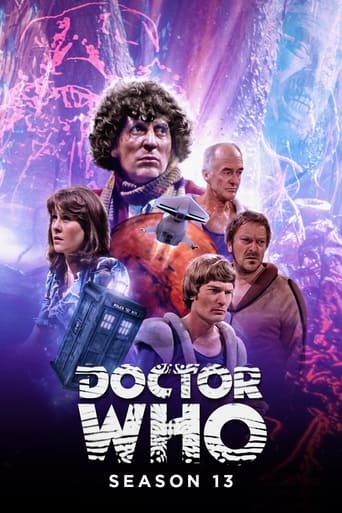
Season 13
It was during this season that the Doctor cut ties to UNIT (after Terror of the Zygons, the Brigadier would not appear again until Mawdryn Undead in 1983, and The Seeds of Doom marked the last occasion to date that the Doctor was explicitly said to be working for UNIT - as opposed to working with them as occasions warranted). Several of the serials in this season, particularly Pyramids of Mars and The Brain of Morbius, are among the best-known of the 1970s-era storylines. Though it was aired as a part of Season 13, Terror of the Zygons was actually filmed as part of the previous season; this holdover allowed the series to switch back to an autumn season start.
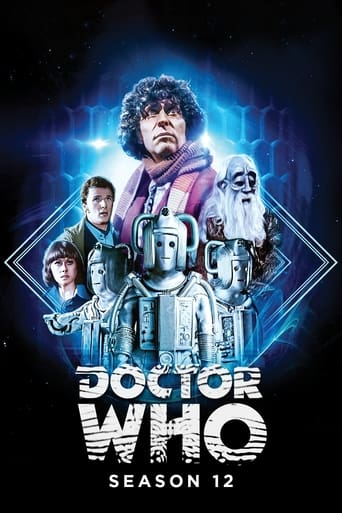
Season 12
All the stories in this season were interconnected, several forming a loose story arc relating to Space Station Nerva. The Cybermen returned to the series for the first time since The Invasion. Genesis of the Daleks, a story which introduced Davros and showed the creation of the Daleks, is one of the most famous of all Doctor Who serials.
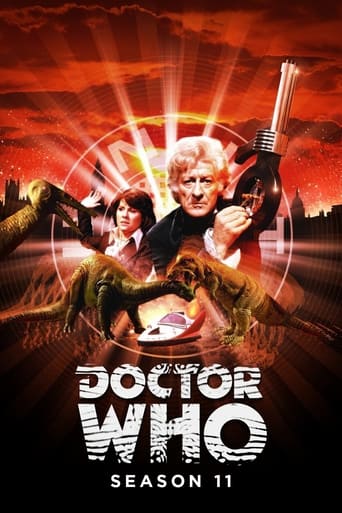
Season 11
It was Jon Pertwee's final season as the Doctor and included, very briefly, the first appearance of Tom Baker as the Fourth Doctor. The Time Warrior, the season opener, introduced Sarah Jane Smith, who was a frequently featured character in the Doctor Who universe decades after her departure in Season 14. The same story also, for the first time, named the Doctor's homeworld as Gallifrey. UNIT also began to be phased out of the series during this season.
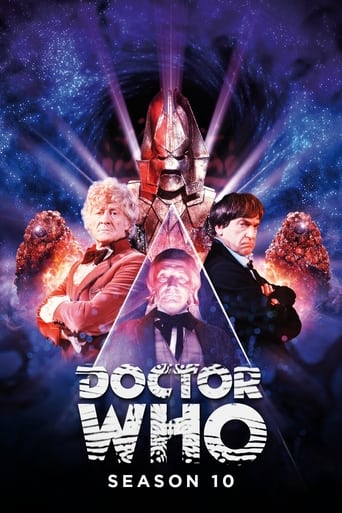
Season 10
William Hartnell returned in a cameo as the First Doctor and Patrick Troughton in a more substantial role as the Second Doctor in The Three Doctors. This story marked the end of the Doctor's exile on Earth, opening up the series to more off-world adventures and beginning a gradual reduction of UNIT-related stories.
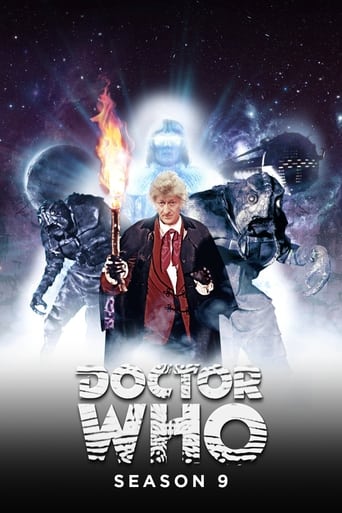
Season 9
It was noted for being the beginning of the end of the Doctor's exile on Earth, with the Doctor's TARDIS still under the control of the Time Lords (The Mutants) and restricted freedom (The Curse of Peladon and The Time Monster), as well as UNIT and the Master appearing less frequently in compared to the previous two series. As well as the return of the Daleks and the Ice Warriors, this series also introduced Alpha Centauri, Aggedor and the Silurians' aquatic cousins the Sea Devils.
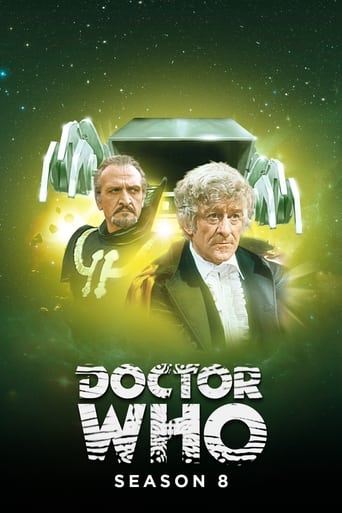
Season 8
As of 2017, season 8 remains notable for being the season with the most number of regular characters. Not only did it see a new companion in the form of Jo Grant, but it featured a regular enemy — The Master — who was the first regular Time Lord enemy of the Doctor to appear more than twice, and an expanded regular UNIT cast that now included Sergeant Benton and Mike Yates in most episodes. Adding in returning regulars Jon Pertwee and Nicholas Courtney, the regular cast swelled to six.
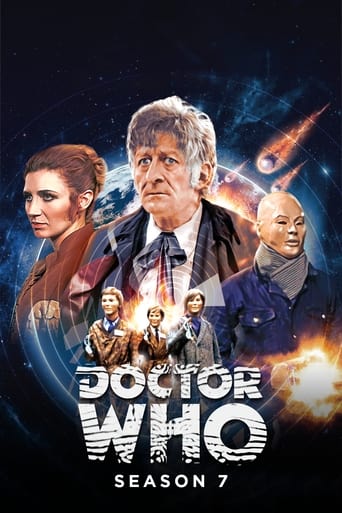
Season 7
It was the first series produced and broadcast in colour and the first set entirely in one time period and almost entirely on Earth (the latter of these factors would later be repeated for Season 26 and Series 1, although in those two cases there was no attempt at an in-universe explanation for confining the Doctor to the planet). Although the series did not have an overall story arc, it did feature a recurring subplot of the Doctor trying to adjust to life as an exile while trying to circumvent the restrictions placed upon him by the Time Lords, and began the process where the Doctor would try to gain more control over his TARDIS. Beginning with this series and continuing for the next few years, most storylines involve the Doctor working with UNIT.
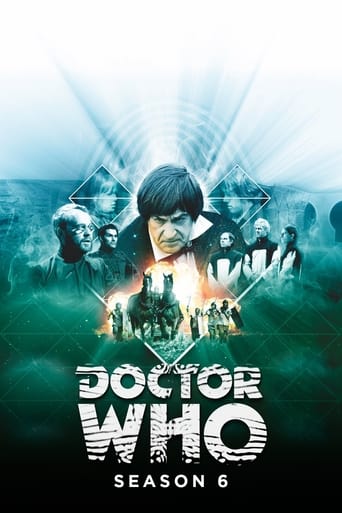
Season 6
This season featured the first ever UNIT story, The Invasion, which showcased the return of Brigadier Lethbridge-Stewart. It also featured the first official appearance of Time Lords and the as yet unnamed Doctor's home planet (another member of Susan and the Doctor's race, the Monk, had appeared previously, but without much elaboration and without using the term "Time Lord"). It also marked the tenure of Patrick Troughton as the Second Doctor. It consisted of seven serials and forty-four episodes, including two epic-length storylines: the eight episodes of The Invasion and the ten-episode The War Games.
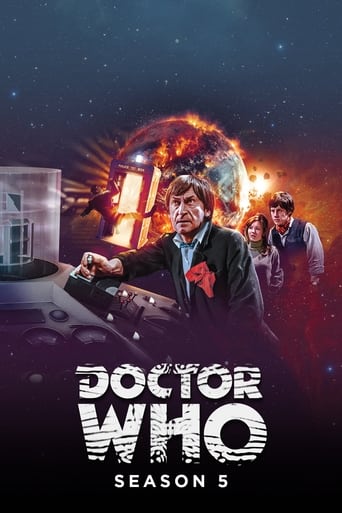
Season 5
No complete stories from the season were known to have survived until the early-1990s when archivists recovered a complete version of The Tomb of the Cybermen. A second complete story, The Enemy of the World was recovered in 2013, along with a nearly complete recovery of the story that followed it, The Web of Fear. The season is also notable for having Patrick Troughton play a double-role as both the Doctor and Salamander in The Enemy of the World.
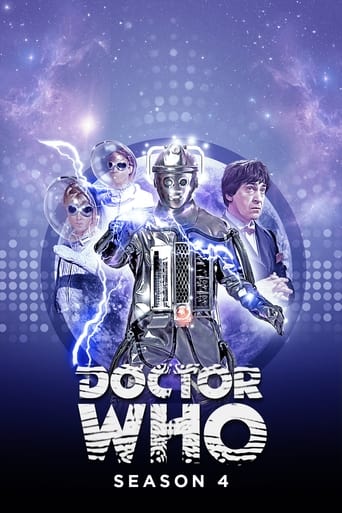
Season 4
This season was a season of major changes for Doctor Who, including some that have influenced the series and franchise ever since. Most notably, season 4 saw William Hartnell's First Doctor hand off the baton to Patrick Troughton's Second Doctor in the very first regeneration. When Hartnell announced his plans to leave the series, the show's writers came up with the idea of having the Doctor change his appearance and personality. In 1966, while it was not uncommon for actors to change in ongoing TV and film roles, this was possibly the first time a change in appearance was written into the very nature of the character.
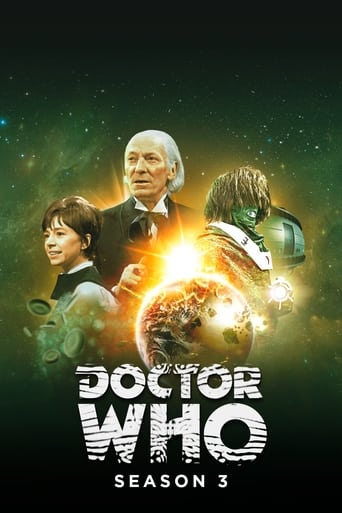
Season 3
At twelve episodes, The Daleks' Master Plan was the longest story in the show's history until superseded by the fourteen-episode The Trial of a Time Lord in 1986. The season also had the greatest number of different companions (seven) and producers (three). This was the longest season in the history of the franchise to date, at 45 episodes. It also featured the first appearance of actor Nicholas Courtney, although not in his most famous role as the Brigadier. The Daleks' Master Plan also saw the return of Peter Butterworth as the Monk, who became the second Doctor Who enemy to make a return (after the Daleks themselves) to the show. This was also the season of The War Machines, to date the only televised story in which the taboo of never referring to the Doctor directly by the name "Doctor Who" is broken, with the exception of Missy's teasing in World Enough and Time.
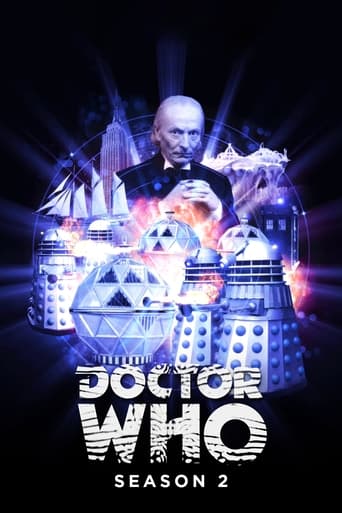
Season 2
Milestones this season included not one but two encore appearances by the Daleks; the departure of the original three companions, Susan Foreman, Barbara Wright and Ian Chesterton; and the first appearance of someone else from the Doctor and Susan's home planet, and the first Time Lord enemy to appear.
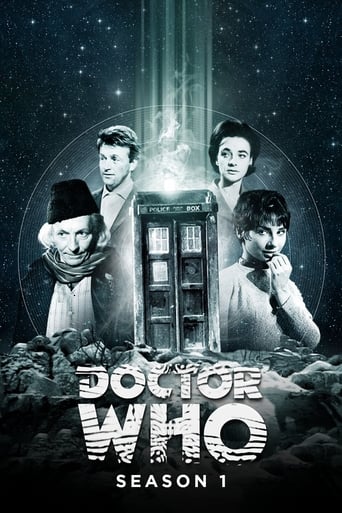
Season 1
The season introduces William Hartnell as the First Doctor, an alien who travels through time and space in his TARDIS, which appears to be a British police box on the outside. Carole Ann Ford is also introduced as the Doctor's granddaughter Susan Foreman, who acts as his companion alongside her schoolteachers Ian Chesterton and Barbara Wright, portrayed by William Russell and Jacqueline Hill, respectively. Throughout the season, the Doctor and his companions travel throughout history and into the future. Historical stories were intended to educate viewers about significant events in history, such as the Aztec civilisation and the French Revolution; futuristic episodes took a more subtle approach to educating viewers, such as the theme of pacifism with the Daleks.
Similar titles
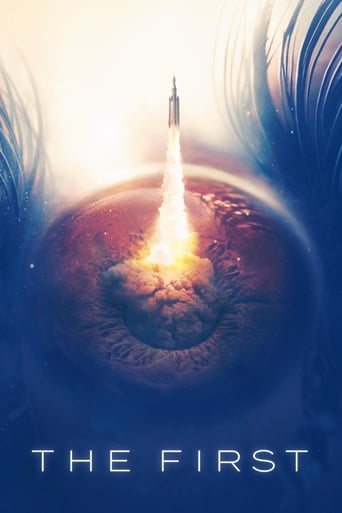
HULU
The First
Follow the first human mission to Mars, exploring the challenges of taking the first steps toward interplanetary colonization. The story focuses not only on the astronauts, but also on their families and loved ones, as well as the ground team on Earth.
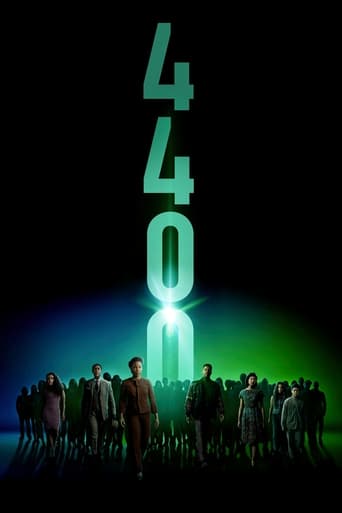
4400
4400 overlooked, undervalued, or otherwise marginalized people who vanished without a trace over the last hundred years are all returned in an instant, having not aged a day and with no memory of what happened to them. As the government races to analyze the potential threat and contain the story, the 4400 themselves must grapple with the fact that they've been returned with a few "upgrades", and the increasing likelihood that they were all brought back now for a specific reason.
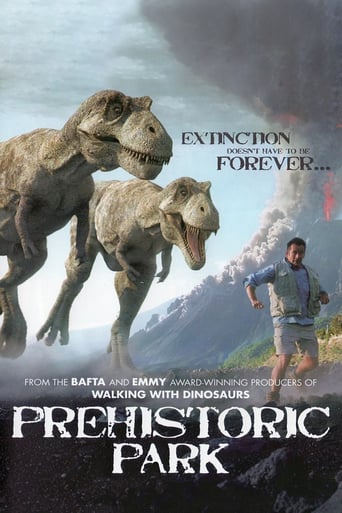
Prehistoric Park
Using his knowledge of today’s animal kingdom and the latest research, wildlife adventurer Nigel Marven uses a time portal to take him into the past, on a quest to rescue long lost prehistoric creatures.

Caprica
Set 58 years before Battlestar Galactica, Caprica follows two rival families - the Graystones and the Adamas - as they grow, compete, and thrive in the vibrant world of the peaceful 12 Colonies, living in a society close to our own. Entangled in the burgeoning technology of artificial intelligence and robotics that will eventually lead to the creation of the Cylons, the two houses go toe-to-toe, blending action with corporate conspiracy and sexual politics.
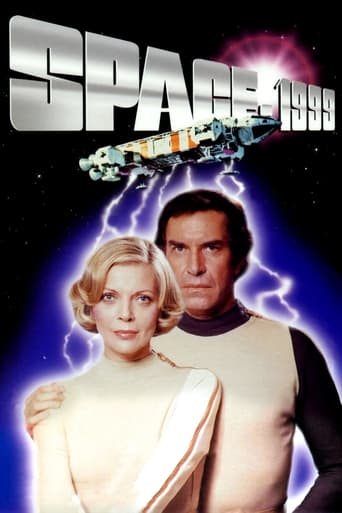
Freevee
Space: 1999
The crew of Moonbase Alpha must struggle to survive when a massive explosion throws the Moon from orbit into deep space.

Prime Video
3rd Rock from the Sun
3rd Rock from the Sun is an American sitcom that aired from 1996 to 2001 on NBC. The show is about four extraterrestrials who are on an expedition to Earth, which they consider to be a very insignificant planet. The extraterrestrials pose as a human family in order to observe the behavior of human beings.
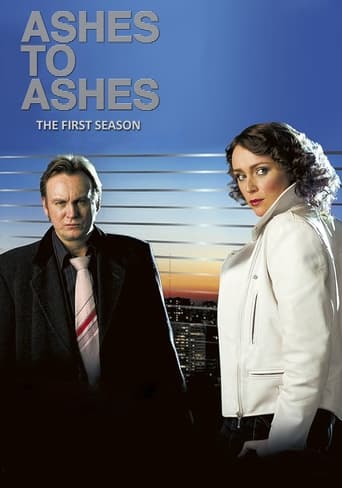
Britbox
Ashes to Ashes
Crime drama series featuring Life On Mars' DCI Gene Hunt. After being shot in 2008, DI Alex Drake lands in 1981, where she finds herself in familiar company.
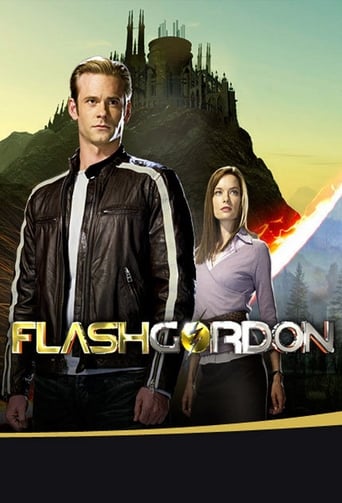
Flash Gordon
Flash Gordon is an American science fiction television series that debuted on Sci Fi in the United States on August 10, 2007 and continued airing new episodes through February 8, 2008. It has also appeared on the United Kingdom Sci Fi Channel and SPACE in Canada. The series was developed by Peter Hume, who served as executive producer/show runner and wrote the first and last episodes, among others.
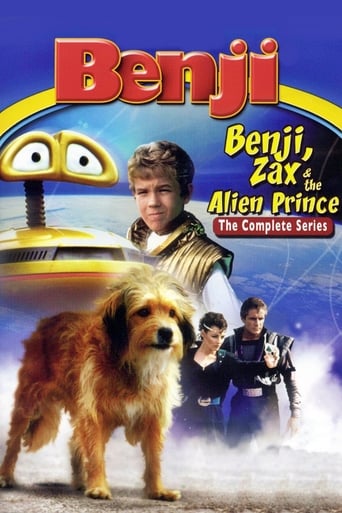
Benji, Zax & the Alien Prince
Benji, Zax & the Alien Prince is a live-action Hanna-Barbera and Mulberry Square children's science fiction television series created by Joe Camp, the creator of the Benji film franchise. The series aired Saturday mornings on CBS in 1983 with repeats airing in the United States and internationally for a number of years through the 1980s.
The series was taped in various parts of the Dallas–Fort Worth Metroplex, with interiors taped at the Las Colinas studios in Irving, Texas. The entire series was released to DVD by GoodTimes Home Video as four separate releases of 3 or 4 episodes each and a single release with all 13 episodes.

Dark Skies
Dark Skies is an American UFO conspiracy theory-based sci-fi television series that aired from the 1996 to 1997 season for 18 episodes, plus a two-hour pilot episode. The success of The X-Files on Fox proved there was an audience for science fiction shows, resulting in NBC commissioning this proposed competitor following a pitch from producers Bryce Zabel and Brent Friedman. The series debuted September 21, 1996 on NBC, and was later rerun by the Sci-Fi Channel. Its tagline was "History as we know it is a lie."
Related
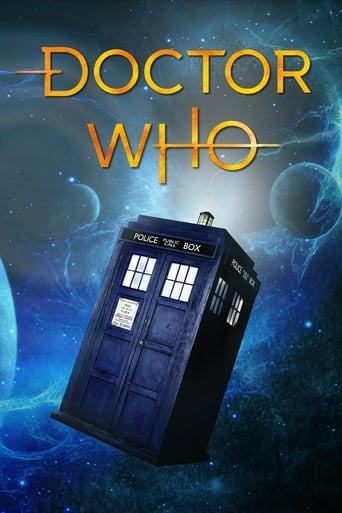
Max
Doctor Who
The Doctor is a Time Lord: a 900 year old alien with 2 hearts, part of a gifted civilization who mastered time travel. The Doctor saves planets for a living—more of a hobby actually, and the Doctor's very, very good at it.
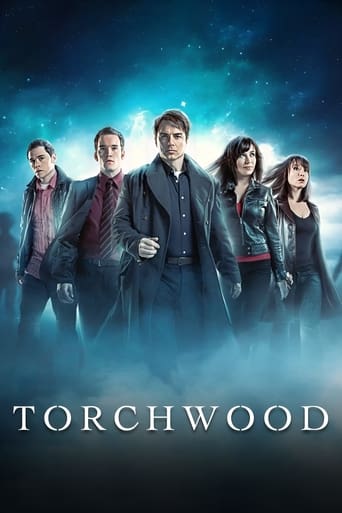
Max
Torchwood
The exploits a team of people whose job is to investigate the unusual, the strange and the extraterrestrial.
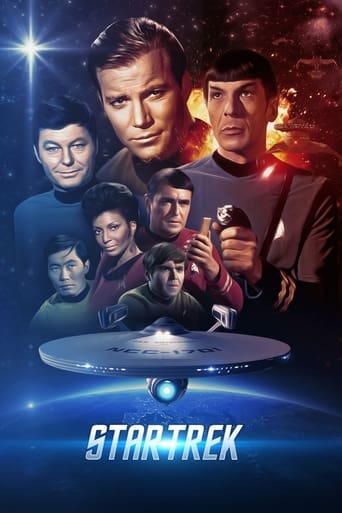
Prime Video
Star Trek
Space. The Final Frontier. The U.S.S. Enterprise embarks on a five year mission to explore the galaxy. The Enterprise is under the command of Captain James T. Kirk with First Officer Mr. Spock, from the planet Vulcan. With a determined crew, the Enterprise encounters Klingons, Romulans, time paradoxes, tribbles and genetic supermen led by Khan Noonian Singh. Their mission is to explore strange new worlds, to seek new life and new civilizations, and to boldly go where no man has gone before.

Paramount+
Life Unexpected
16-year-old Lux was given up for adoption at birth but never adopted. When she is put back into the custody of her estranged-since-high-school birth parents, Cate and Baze, the three form an unlikely family.
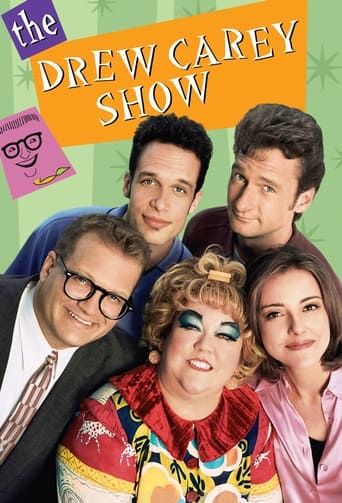
The Drew Carey Show
Drew is an assistant director of personnel in a Cleveland department store and he has been stuck there for ten years. Other than fighting with co-worker Mimi, his hobbies include drinking beer and not being able to get dates. To make a few extra bucks he has a micro-brewery going in his garage with his buddies.
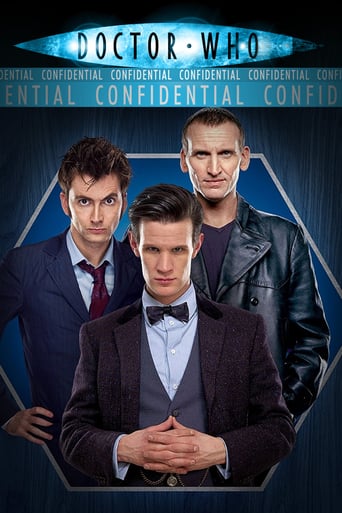
Doctor Who Confidential
Doctor Who Confidential is a documentary series created by the British Broadcasting Corporation to complement the revival of the long-running British science fiction television series Doctor Who. Each episode was broadcast on BBC Three on Saturdays, immediately after the broadcast of the weekly television episode on BBC One. The running time of the first two series was 30 minutes, being extended to 45 minutes in the third. BBC Three also broadcast a cut-down edition of the programme, lasting 15 minutes, shown after the repeats on Sundays and Fridays and after the weekday evening repeats of earlier seasons.
Described as focusing on the human element of the series, Confidential features behind-the-scenes footage on the making of Doctor Who through clips and interviews with the cast, production crew and other people, including those who have participated in the television series over the years of its existence. Each episode deals with a different topic, and in most cases refers to the Doctor Who episode that preceded it.
There have also been two episodes of Doctor Who Confidential broadcast apart from the showing of Doctor Who episodes: in November 2006 an edition subtitled "Music and Monsters" was produced going behind the scenes of a televised concert of soundtrack music produced as part of that year's Children in Need appeal, and on 3 January 2009, a special edition was broadcast to announce the actor chosen to play the Eleventh Doctor.
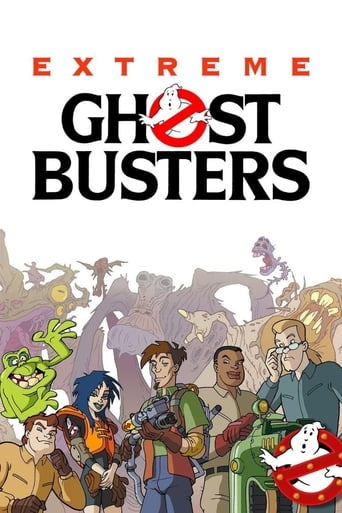
Extreme Ghostbusters
Based on the blockbuster films, this action-packed animated series starts a decade after the original Ghostbusters saved New York City from ghosts, goblins and ghouls. All the guys have left town, except Egon, now teaching a Paranormal Studies class at the local university. But Zuul, the all-powerful demon, has awakened from hibernation to wreak havoc on the unsuspecting masses. Desperate to recruit a new team, Egon and the plucky Janine turn to four of his teenage students: Kylie, a genius with an encyclopedic knowledge of the occult; Eduardo, a hip slacker with a crush on Kylie; Garrett, a wheelchair-bound athlete with a hot temper; and Roland, a “gentle giant” mechanical whiz. It's only a matter of time before Egon, Janine, old pal Slimer and the “kids” band together to rid the city of the evildoers.

Hippies
Swinging London, 1969. From his flat in Notting Hill Gate, Ray Purbbs edits an 'underground' (that is, counterculture) magazine, Mouth, assisted by his fellow hippies Alex, Jill and Hugo. Ray is passionate about protest, ludicrously enthusiastic about every hip trend and convinced he is (or could be) a major player in the battle between the Establishment and the alternative society. Alex - though he comes from a wealthy background and seems more interested in golf than altering society - is coolness personified, a man so laid-back he seems to exist outside of reality. Jill embraces all the new-found liberty afforded her gender and claims to espouse free love, though this attitude doesn't stretch to her 'boyfriend', Ray, long been deprived of her carnal interest. Hugo is spectacularly vague, almost brilliant in his obliqueness. Led by Ray, the quartet jump on every trendy bandwagon and comprehensively fail to make the slightest bit of difference in all they do. The gang are pretty useless at everything - in fact, they're not even that good at being hippies.
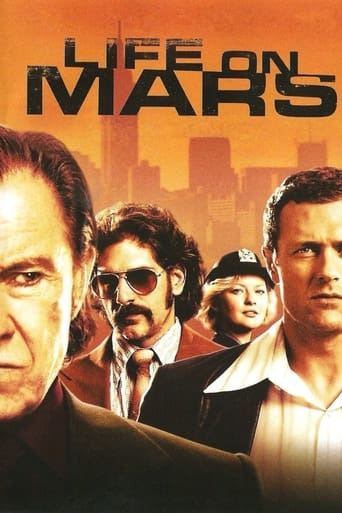
Life on Mars
After a car crash, police detective Sam Tyler mysteriously finds himself transported back to 1973 and still working as a detective.

The Young Ones
The misadventures of four lunatic students who live in a shared student house. There's Rik, the overblown political one addicted to Cliff Richard, Vyvian the experimental scientific one/part-time anarchist, Neil the worried hippy, and Mike the ladies' man (at least he is in his mind).
Top Streaming TV Show
#1

Grey's Anatomy
March. 27,2005
7.6
#2

A Teacher
November. 10,2020
6.9
#3
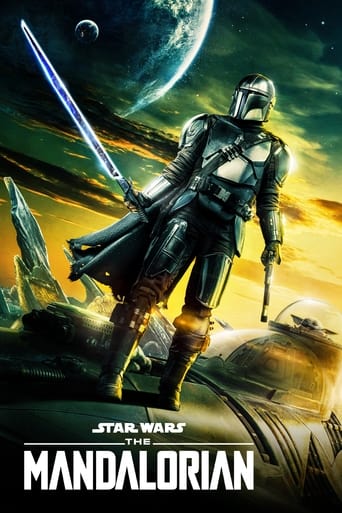
The Mandalorian
November. 12,2019
8.7
#4

Game of Thrones
April. 17,2011
9.2
#5

Station 19
March. 22,2018
7
#6
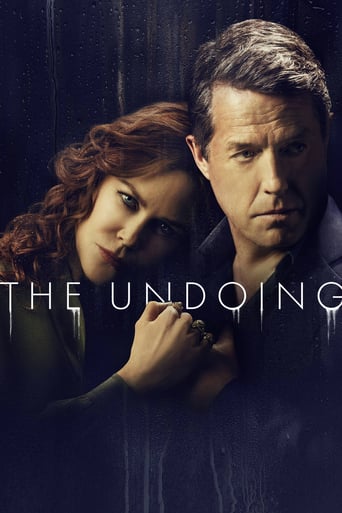
The Undoing
October. 25,2020
7.4
#7
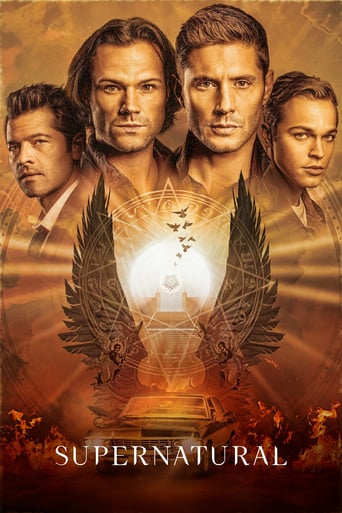
Supernatural
September. 13,2005
8.4
#8
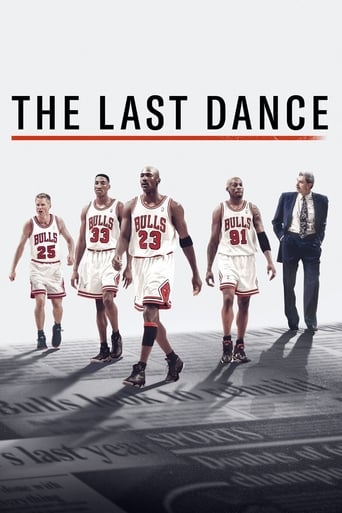
The Last Dance
April. 19,2020
9.1
#9

Euphoria
June. 16,2019
8.3
#10
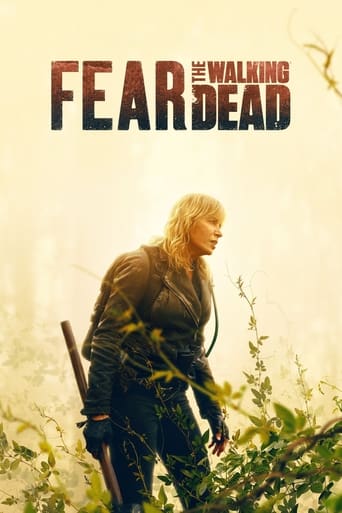
Fear the Walking Dead
August. 23,2015
6.8



